There’s chemistry behind every step of a romantic relationship, from the initial spark to the pain of break up, as Zahra Khan discovers
Love is merely a madness, Shakespeare famously wrote. With musicians, artists and writers obsessed with the notion of love, it is not hard to understand why researchers are trying to use science to explain it. And what’s chemistry got to do with it? We even use the word to describe this intangible feeling necessary to initiate and maintain romantic connections – this ‘spark’ felt between two people. The emotions we feel when we fall in love, develop attachments, build relationships and even break up are all linked to brain chemistry. Several neuropsychologists have investigated the brain during the different stages of love and have found explicit links between brain chemicals and human behaviour.
Homo sapiens have evolved three distinct brain systems for courtship, reproduction and parenting. The human need for romantic love is not just an artist’s fantasy, it is a fundamental human need just like food, water and warmth. Love triggers a whole cocktail of neurochemicals because it is relevant to survival. There are chemical neurotransmitters and hormones that have been identified as being critical for this process such as oxytocin, vasopressin, dopamine, serotonin and testosterone.
The evidence for romantic love comes from neuroimaging and endocrinological research as well as theorising in in evolutionary human biology. Deep structures in the brain associated with reward and motivation, particularly the left ventral tegmental area, are heavily involved in the dopamine circuitry. Functional magnetic resonance imaging (FMRI) studies conducted by Helen Fisher of Indiana University, US, and colleagues indicate that romantic love is associated with dopaminergic pathways in the brain’s reward system; activating the brain’s dopamine rich regions – akin to the brain activity displayed when someone is addicted to opioids and cocaine. Hence, the longing for love can be considered a natural high.
It is generally agreed that there are at least two types of love we can identify – the first being romantic love, early stages involving passion and lust, the second more long-term, stable form of love. ‘That period of intense emotions…often associated with the early stages of a romantic relationship,’ is associated with passion and lust says Adam Bode, a romantic love and human mating researcher. ‘The sort of love that is more stable and less intense and associated with long term pair bonds is coined companionate love and these two states are related… but they are distinct and have different biological profiles.’
Pair bonding
‘Nature gave us this system, for our evolution, for romantic love and attachment,’ says Lucy Brown, a colleague of Helen Fisher and professor of neurology at the Albert Einstein College of Medicine in New York City, US. ‘This incredible basic behaviour has been studied in prairie voles. These lower mammals have shown to have similar genetic markers to humans. The ventral pallidum, the part of the brain showing high activation, is responsible for pair bonding, and we share this system for pair bonding with lower mammals,’ she explains. Pair bonding is the formation of a close relationship through courtship and sexual activity with a partner. The mating pair often produce offspring and the bond is often lifelong. Only 3% of animals pair bond and form lasting relationships. ‘Neuroscientists have been able to look very closely at the neurochemistry of [prairie voles] brain. And indeed, they did find directly in those little animals that dopamine, vasopressin and oxytocin were involved in pair bonding.’
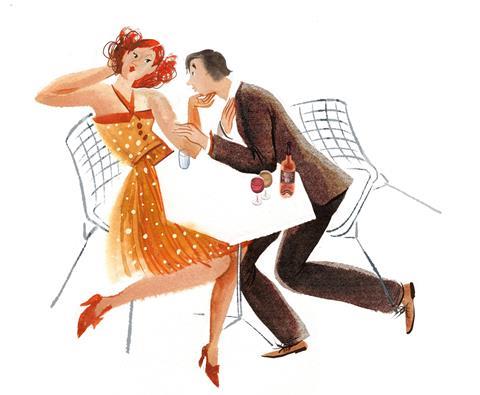
The basic science behind romantic love has been developed from animal observations and extrapolated. ‘There are observable behaviours for pair bonding such as [animals] nest, they prefer each other, they’re aggressive towards intruders, they travel together, they groom one another,’ explains Bianca Acevedo, a research scientist at the University of California, Santa Barbara, in the US. In humans this is seen as a preference for a specific person known as romantic love.
The animal brain is always learning from reward and similarly the human brain’s reward system is highly activated in feelings of love. ‘Natural selection builds a brain that motivates you to do things that reproduce,’ comments Loretta Breuning, author of Habits of a Happy Brain. While the reproductive strategy has always been the drive behind finding a mate in the animal kingdom, humans are more complex, social beings and the need for love doesn’t always the need to produce offspring. ‘To solidify the pair bond [in animals] it coincides with having offspring and raising them… If, within a few years, the pair bond does not create offspring, they don’t generally stay together,’ Acevedo says and though our brains have evolved for this purpose, romantic love still exists without the creation of offspring – and that is what is referred to as attachment. The brain system has developed over evolution not just for survival, but also through the need to protect each other.
Brown’s research with Fisher hypothesised that romantic love was a developed form of a mammalian drive, to pursue preferred mates. ‘Then we looked at the data, we saw that the activation in the brain for everybody was in this dopamine-rich area of the brain stem – not in the higher parts of the cognitive human brain. But in these lower parts, where reflexes are controlled, reflexes, like swallowing, even breathing,’ says Brown.
Love is a drug
Our neural pathways are built from past experiences with these ‘happy’ chemicals that determines what turns them on and our brains are designed to recognise opportunity and anticipate reward. The initial stage of love is usually lust. That is, the instant attraction one feels in the presence of another – love at first sight, even. Individuals in this phase experience heightened dopamine and testosterone.
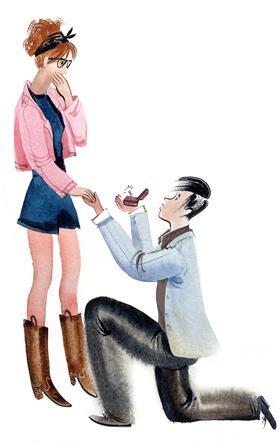
‘Testosterone plays a role in sexual desire and sex drive… one of the theories was that testosterone in females increases to make them want to engage in more sex, and testosterone levels in males reduced in an attempt to make them less interested in sex with multiple partners,’ says Bode. Along with oestrogen and dopamine, these chemicals are very important for our sex drive. Dopamine is associated with arousal and increased focus on the loved one. And because the drive for sex is a basic drive like hunger and thirst, the dopamine system in the hypothalamus is always engaged in romantic love.
Dopamine is the excitement you feel when you’re about to meet a need giving you an indicator of where to invest your energy because the need is being met – just like food and water. ‘And dopamine is released when you say “Yes, this is a good opportunity,”’ says Breuning of when you first meet a potential partner. When we find an ideal person, we are biologically rewarded through dopamine to find that person both interesting and attractive.
For those couples that maintain romantic love, they still get their fix of dopamine ‘when they see that person, when they think about them, their brain lights up, their dopamine centres light up’, says Acevedo. In the longer term, where people go about their daily life and return to their mate, the individual is not solely concentrating on their partner and so this attachment phase is much calmer. Functional MRI studies show that this phase involves chemicals like oxytocin and vasopressin, which allow a relationship to survive past the first few dates. The literature has emphasised oxytocin, often referring to it as the love hormone.
‘About 220 million years ago, in conjunction with evolution, that molecule [oxytocin] gave us a whole lot of benefits,’ says Sue Carter, a biologist at Indiana University in the US. It underlies the chemistry of the attachment of a mother with their newborn. ‘We have oxytocin, and we have a more primitive molecule, a kind of stress hormone phase suppressant that has many other functions – vasopressin.’ Oxytocin and vasopressin work combinatorically and have different receptors but can bind to each other’s receptors. Both oxytocin and vasopressin are being released in the falling in love experience, but these chemicals are especially important for staying in love. Oxytocin is responsible for making us feel good when we bond – it is the urge for protection which can be manifested in several ways and while motivations differ, oxytocin is triggered when you feel protected, for example.
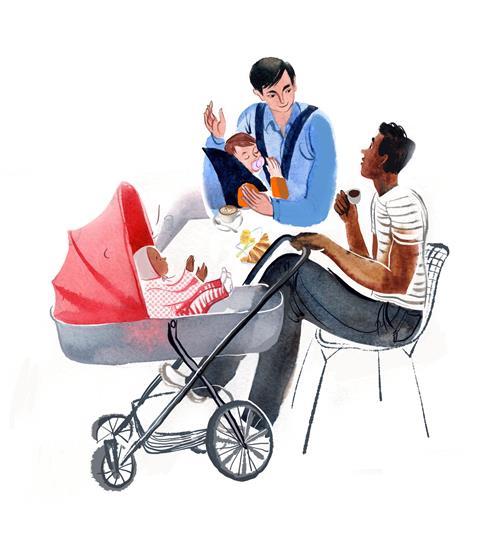
Oxytocin is also important for various behaviours not just for pair bonds, but for trust and empathy, and becomes very significant in a ‘healthy relationship’, says Carter, adding that if vasopressin is the dominant molecule it can result in obsessive, one-sided relationship. The relationship needs to be balanced with a reasonable amount of oxytocin, helping to get the considerable health benefits of good relationships, such as living longer and having less disease. ‘In this way oxytocin is our friend but is not sufficient on its own. We have this beautiful chemistry with these two molecules and then a very large arsenal of other chemicals like dopamine, serotonin, opioids etc,’ adds Carter.
A recent study looked at prairie voles and found that when removing the oxytocin receptors, they still formed pair bonds so it is possible that oxytocin may not be necessary for pair bonding, but there are very few explicit studies on romantic love and oxytocin. Bode says that while oxytocin makes us feel happy and content when we bond, ‘the pleasure we actually gain from these relationships is dictated by opioids’. Endorphin is a natural opioid in the body and is mostly designed to relieve pain but can also be triggered when you laugh. ‘There’s something called the brain opioid theory of social attachment, which argues that the opioid system is actually the intricate system involved in all sorts of close social relationships,’ he adds, stating that endorphins might be better described as the love drug that give us our sense of calmness and pleasure.
Can we fix a broken heart?
Some people call love a drug, and it does work on the same chemistry that other drugs work on. When you take psychedelics, you pour out both serotonin and oxytocin and so the analogies between romantic love and substance dependence are valid. When you’re no longer connected to the person you’re in love with, you can suffer from withdrawal. ‘This is a withdrawal system… pretty much identical to the one you see with opioids,’ says Carter.
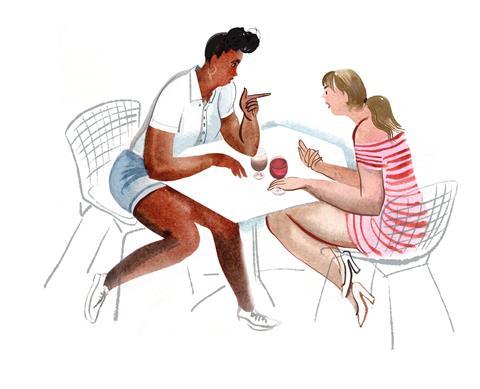
It’s so important to form a pair bond for humans that we try to do everything to save that relationship. Dopamine is still a major player in controlling the feelings from a break-up. When a person experiences heartbreak they are overwhelmed by the activation of their dopamine system – they are craving that person. This has been observed in subjects who, after being shown pictures of their ex-partners, had their reward system go into overdrive and so the heartbreak process can be described as a natural addiction. It’s the distress area that’s active in the brain – we feel the distress of physical pain.
Other behaviours related to threat and fears start to emerge and some individuals can suffer unpleasant physiological symptoms such as depression. While painkillers and antidepressants, particularly selective serotonin reuptake inhibitors (SSRIs), have been shown to relieve some of the grief or feelings of inadequacy, serotonin withdrawal symptoms can happen; ‘SSRIs in many people inhibit both emotional behaviours and sexual responses,’ warns Carter. Withdrawal from these drugs can have effects of creating a dependency that will later have an impact on the individual’s ability to fall in love again.
The disappointment associated with heartbreak is accompanied by a big release of threat chemicals. Stressful moments are associated with elevated cortisol. Cortisol, linked with stress, notifies the brain of a threat – it’s released when you fail and tells the brain that your efforts are not getting a reward. During heartbreak you give up on this target and ‘it builds a new neural pathway that causes your brain to think negatively about that target instead of positively’, says Breuling. This has been seen in studies by Brown. ‘When our subjects were looking at this picture of the person who had dumped them, their brains were also trying to - in some of the cognitive areas – weight the negatives and positives…trying to make something better of this.’
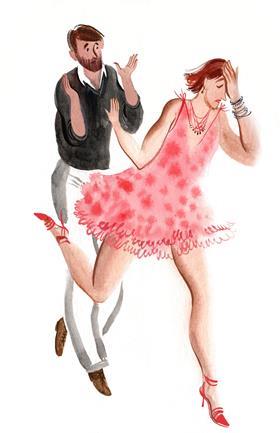
However, falling out of love is very different to breaking up. ‘You may still feel warmth and friendship towards the person, and you still may love them, but that high isn’t there anymore. The activations… tend to be seen in oxytocin- and serotonin-rich regions of the brain, but not necessarily the dopamine-rich areas of the brain,’ Acevedo points out, analogous to the brain activity when seeing images of close friends and family.
Hopeful future
Considering how integral love is to our lives, research in the field of romantic love is in its infancy with a lot of uncharted territory in the neuroscience area. Humans are extremely variable, and how much they use the reward system for love and attachment is partly genetic and a lot comes from their experience. The lack of defined parameters for assessment makes this research area challenging yet the potential is huge. Understanding these chemicals and how they relate to different emotional states can allow us to deal with ‘broken hearts’ at a neurochemical level, as well as accelerating the process of finding love but to date, we know very little about the brain.
Nonetheless, there is strong scientific evidence for the idea of ‘chemistry’ – ‘the brain has told us something about ourselves as humans, it is naturally occurring but a very strong drive…It’s not just an emotion that you have control over,’ explains Brown, adding that this basic drive for sticking to someone is a part of every human, regardless of their sexual orientation.
There are strong motivations for pursuing the subject as Bode points out. ‘Romantic love is the basis for romantic relationship formation and family formation throughout much of the world. And it is something that can bring both great sorrow and great joy. And to that extent, I think it’s intrinsically valuable to understand that things that bring us sorrow and joy.’
Zahra Khan is a science writer based in London, UK

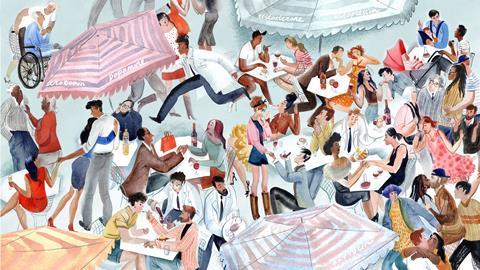


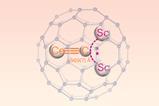
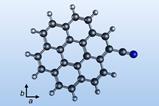
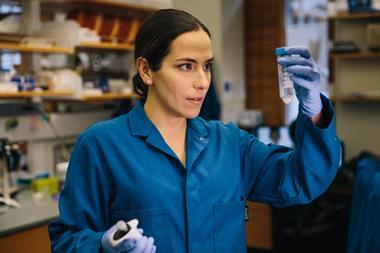











No comments yet